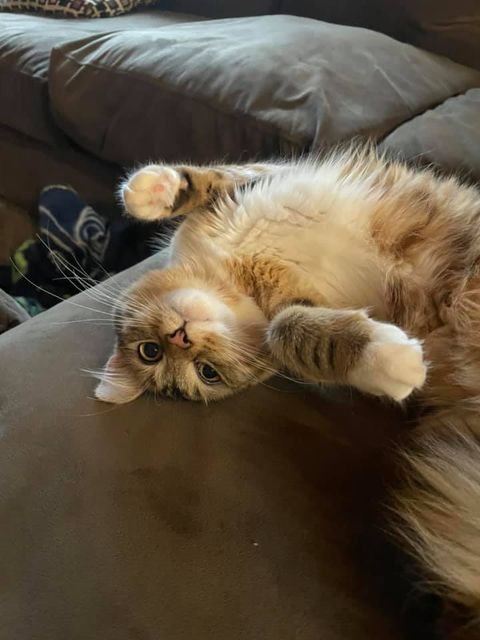Cats | Dogs
It’s easy to see the unusual circumstances of the COVID-19 era as a bonanza for dogs and cats. As working from home became the norm, more people adopted pets who then enjoyed round-the-clock companionship and more dog walks than even they knew what to do with. It was a win-win for three social species looking for companionship in troubled times.
But, if dogs and cats crave routine, what happens when the routine shifts and owners are no longer around 24/7? Many animal behaviorist experts note that these shifts can be classic triggers for separation anxiety.
Although every animal’s journey will be different, the end goal is the same – to change the relationship with you (or create one if your pet is new to your family) so that the animal is not so dependent on you. As you may currently be at home together all the time, your pet may have become increasingly attached and it may be a good idea to help them understand that they can’t constantly be interacting with you.
It’s true that the process may be different for dogs and cats (and is much less common in cats), but a key principle in managing separation anxiety, and the general foundation of a healthy relationship is to teach your dog or cat to be independent during the hours you are together.
When a pet is given unlimited, free access to affection, attention, cuddles, furniture time, belly rubs, and baby talk, they can become dependent on those types of rewards from their owner. Then when those things are suddenly removed because the human has left the room or house—especially for long periods of time—the pet doesn’t have the skills needed to remain calm and trust that it’s safe to just relax until their owner returns.
Be sure you’re setting boundaries in your everyday life with your pet, and creating moments when you’re separated when you’re still home.
What You Can Do for Your Cat
- Look at your cat’s environment to make sure she has lots to do to enrich her life. Does she have toys she can play with? Is there a perch where she has a view of the outside? A bored cat is more likely to look to her owner for stimulation.
- Rather than give your cat attention every time she approaches you for a stroke, think about playing with her with an interactive wand toy or getting a puzzle toy in which to put her food (balls with holes that you fill with kibble, which then drop out as the cat plays with it).
- Get other family members involved in caring for your pet. If it’s always you that feeds and plays with them, they’ll be more closely bonded to you. Teach your cat that she can have these things from a variety of people to ease her reliance on you.
- Start with short absences first, lengthening them over time when you sense your cat is staying relaxed while you’re gone.
- Leave the radio or TV on a station that is often on when you’re there
- Keep arrivals and departures low key (hint: Don’t announce, “Mommy is leaving!”)
- Create a nook, safe haven, or refuge for your cat that is their safe space
- Once home, provide plenty of cuddles and playtime
- Pheromone sprays and plug-ins, which are a man-made version of the substance a cat deposits when she rubs her cheek on your leg or furniture, can help in the home to relax an anxious pet.
- In a severely anxious cat, medication from the vet might be necessary to relax them enough so that they can learn it’s OK to not always be with their owner.
- Try not to make the mistake of thinking that getting another cat will solve the problem. If a cat has separation anxiety, this means they’re over-attached to their owner, not lonely. The anxiety of not having their owner with them will still be present but could actually be increased by the addition of another cat. Territory is very important to cats and not all of them are happy living in multi-cat households.
What You Can Do for Your Dog
- To give yourself, and your dog, the best chance of avoiding problems down the line, do what you can to maintain some separation time when you’re home. That doesn’t have to mean confining your dog physically with a crate or a separate room. But it does mean setting rules that say, “OK. I want you over here when I’m cooking or watching TV.”
- Now is a better time than ever to practice time and place. “Where there’s time to engage and allow your dog into your personal space and also to practice separation, that’s a really good thing.”
- Try to maintain some semblance of a normal routine when it comes to leaving your house without your dog. And when you’re home, maintain that degree of separation, with the limits set by you.
- Be careful you’re not rewarding the behavior you’re trying to discourage. “Dogs learn behaviors in simple patterns, so as owners, we have to be very careful about what patterns we are instilling in our dogs.”. For example, dog owners should be mindful of when and how they’re offering their dog rewards and positive reinforcement; if your dog is pacing, whining, or barking and you then pet, cuddle, or start using cutesy baby talk (or dramatically prolong your good-byes before leaving the house), you’re rewarding those behaviors. And you should never punish your dog for being destructive or eliminating in the house as a result of their anxiety, as that will only succeed at making them more fearful.
- Start small with separation. For example, start small by going through one of the actions that signals departure—like putting on shoes—and then hang out at home. Do this repeatedly to try and remove any initial negative association. You can then move on to training your dog to sit and stay while moving progressively farther away; train them to lie down when you’re out of sight and reward them when you come back.
- Initiate low key departures–When you do leave, don’t make a big deal out of it. The same goes for returning home. It might be tough to pretend you’re not overjoyed to see your pup, but it’s a good idea to avoid an over-the-top reunion.
- Exercise is key—serotonin which has a mood-stabilizing, calming effect is triggered with exercise, so walks, ball chasing, play time with other dogs will help reduce anxiety.
Since the cause of separation anxiety is still not fully understood, it’s not possible to identify specific measures that will prevent it…but there are ways to maximize your pet’s alone-time success.
The most important thing to remember with any anxious pet is that you need to be patient and understand that they are in distress. Whatever you do, never punish your pet for stress-related behavior, and try not to get angry – it will only make the problem much worse!
Consult your veterinarian, a certified trainer or animal behaviorist as soon as you notice signs of separation anxiety in your pet. And remember that whether or not your pet suffers from separation anxiety, training and sustaining a strong relationship should be an ongoing activity for the life of your beloved furry family member.
This article was taken in part from the following sites and experts quoted on these sites. If you’d like to learn more, please check them out.
https://www.petplan.co.uk/pet-information/cat/advice/cat-separation-anxiety/
https://www.thefarmersdog.com/digest/how-to-prevent-and-manage-separation-anxiety-in-dogs/
https://www.prestigeanimalhospital.com/services/cats/blog/8-signs-separation-anxiety-cats-and-what-do-about-them (Please note: this site suggests a pet door for cats as an option. MEOW is committed to indoor only homes and does not agree with this position).



